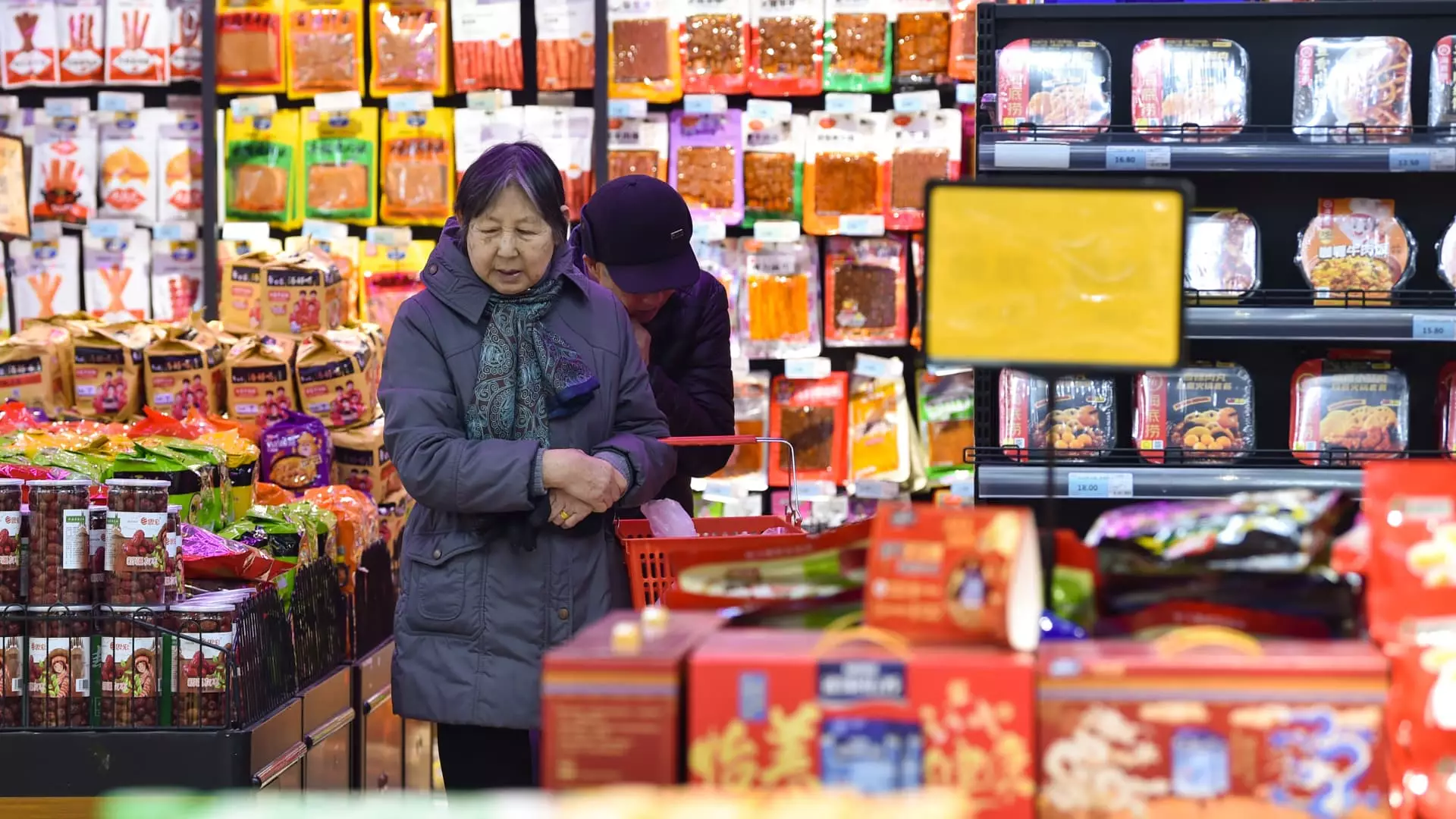In January 2024, China’s economic landscape displayed a complex picture: consumer inflation unexpectedly surged to its highest rate in five months. According to the National Bureau of Statistics, the Consumer Price Index (CPI) increased by 0.5% year-over-year, a notable rise from December’s modest 0.1% growth. Analysts had anticipated a mere 0.4% increase, suggesting that consumer spending might be exhibiting signs of recovery. However, this consumer price growth was not enough to counterbalance the entrenched deflation in producer prices, which continued to reflect weaknesses in manufacturing and factory activity.
For the second consecutive month, the Producer Price Index (PPI) reported a 2.3% decline compared to the previous year, echoing December’s results and surpassing projections which expected a lesser decline of 2.1%. This persistent deflationary trend raises questions about the state of industrial production and the overall health of Chinese manufacturing, which has faced ongoing overcapacity issues. As economic pressures mount, analysts assert that enhanced domestic demand is essential for a shift in this deflationary spiral.
Delving deeper into the data, we observe nuanced shifts in consumer behavior over the Lunar New Year holiday – typically a period marked by increased spending. The holiday fell in January this year, unlike the previous year when it commenced in February. Historically, this season leads to price hikes as consumers stockpile goods for family gatherings, particularly in the food sector. Interestingly, while inflation in areas such as air travel surged by 8.9%, and ticket prices for entertainment increased by more than 11%, overall per capita spending rose by a mere 1.2%. This stands in stark contrast to a robust 9.4% increase in spending recorded the previous year.
This discrepancy hints at deeper anxieties among consumers regarding job security and economic stability. Despite reports of bustling movie theaters and a surge in domestic tourism, the cautious attitude of consumers may ultimately weigh down the anticipated economic rebound.
Policymaking Under Pressure: A Delicate Balancing Act
China’s decision-makers face an intricate challenge as they attempt to stimulate economic growth while combating external pressures, particularly from the ongoing trade tensions with the United States. With trade tariffs imposed by the Trump administration, export-driven growth—one of the few bright spots in the Chinese economy—has come under intense strain. Beijing’s unwavering growth forecast of approximately 5% for the year relies heavily on their ability to jumpstart domestic consumption and navigate these external hazards.
Economic targets set by various Chinese provinces for 2025 reflect this cautious approach, with an average growth target of below 3%. These figures underline an anticipated awareness among policymakers regarding the economic pressures they face. Simultaneously, there is an expectation that monetary and fiscal policies will remain unchanged until the annual parliament session in March.
Looking forward, analysts predict that without a decisive policy intervention focused on boosting domestic demand, deflationary pressures may linger throughout 2024. The balance between maintaining an optimistic growth forecast and acknowledging the undeniable economic headwinds poses a growing dilemma for policymakers.
Experts like Xu Tianchen from the Economist Intelligence Unit warn that a recovery in producer prices may take many quarters, stressing the importance of addressing overcapacity in industrial outputs. Similarly, Zhiwei Zhang from Pinpoint Asset Management highlights the current prioritization of external uncertainties over domestic economic challenges, predicting that this focus will shape monetary and fiscal decisions in the near term.
As China navigates this complex economic terrain, the interplay between consumer spending, external trade factors, and government intervention will be crucial in determining the trajectory of the world’s second-largest economy. While signs of consumer inflation growth could signal resilience, the persistent deflation in producer prices complicates the narrative, hinting at an uncertain economic future heavily influenced by global dynamics.


Leave a Reply